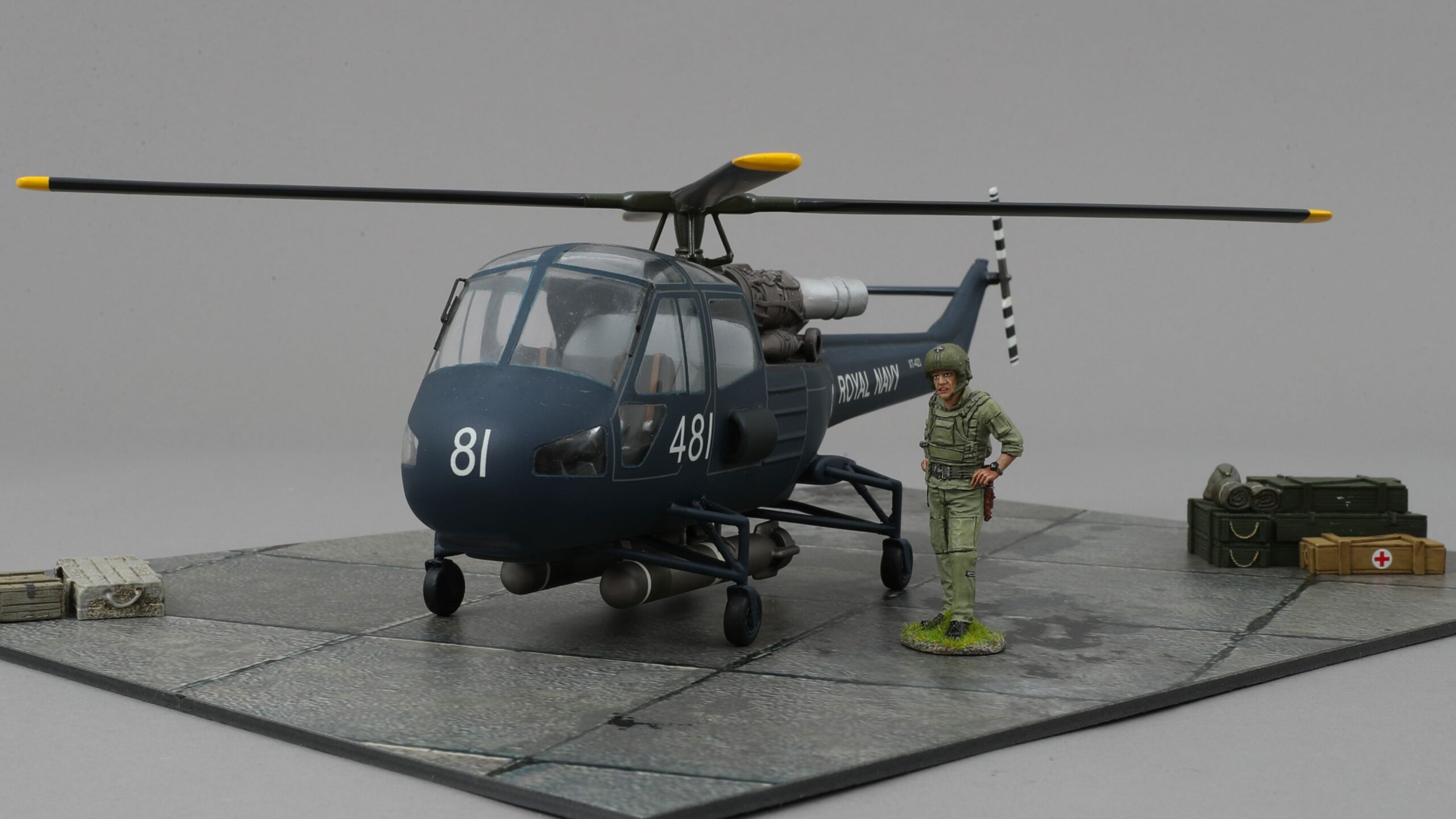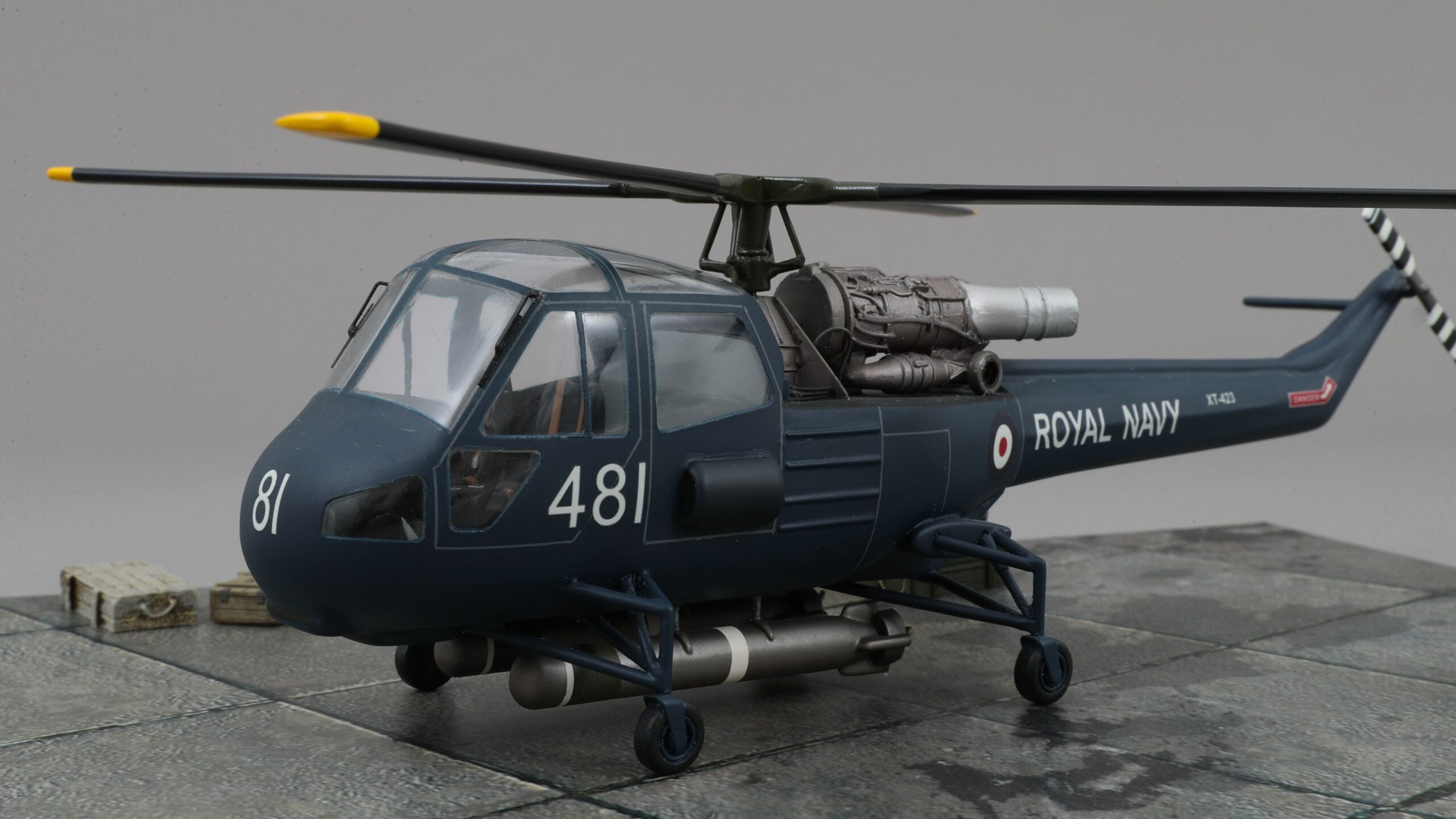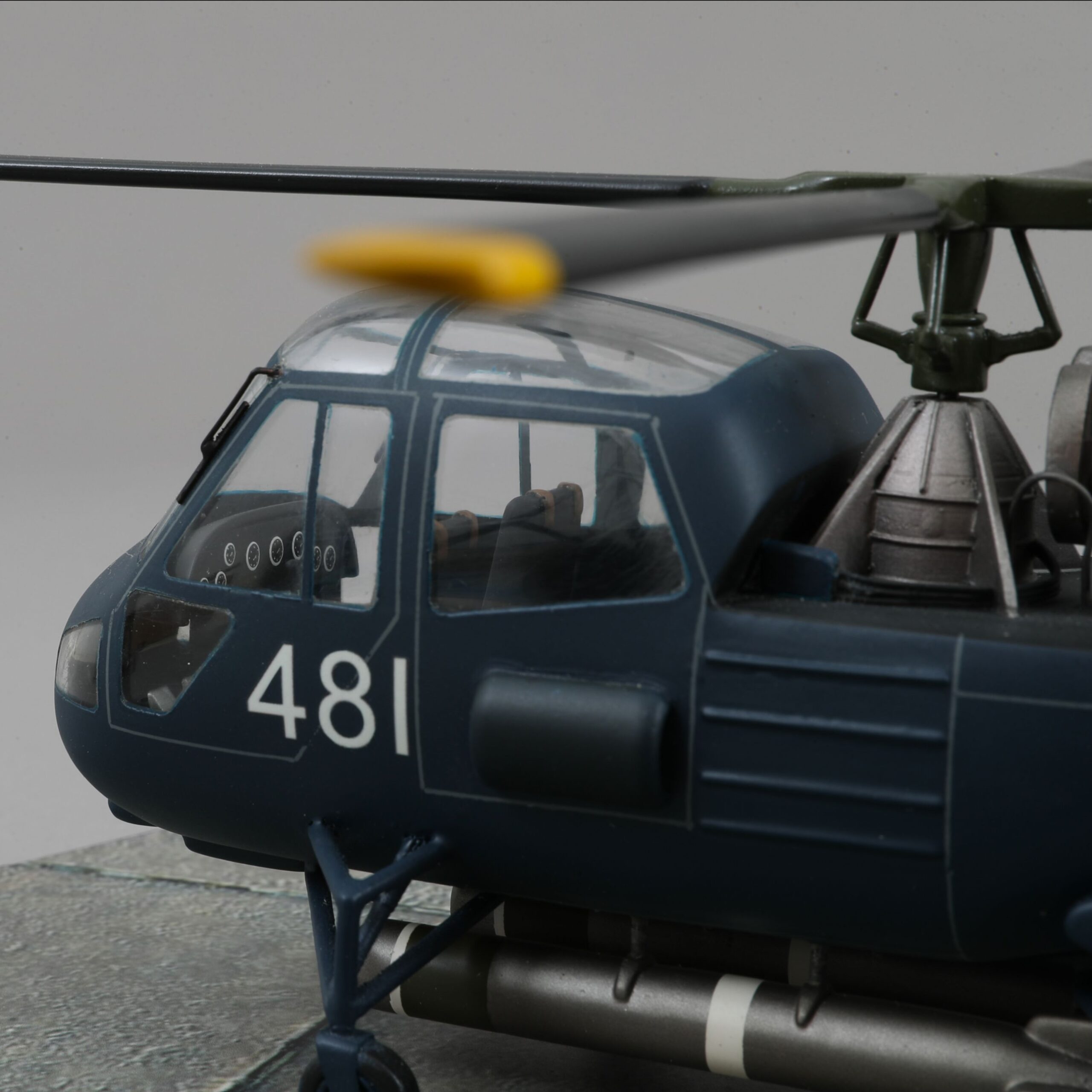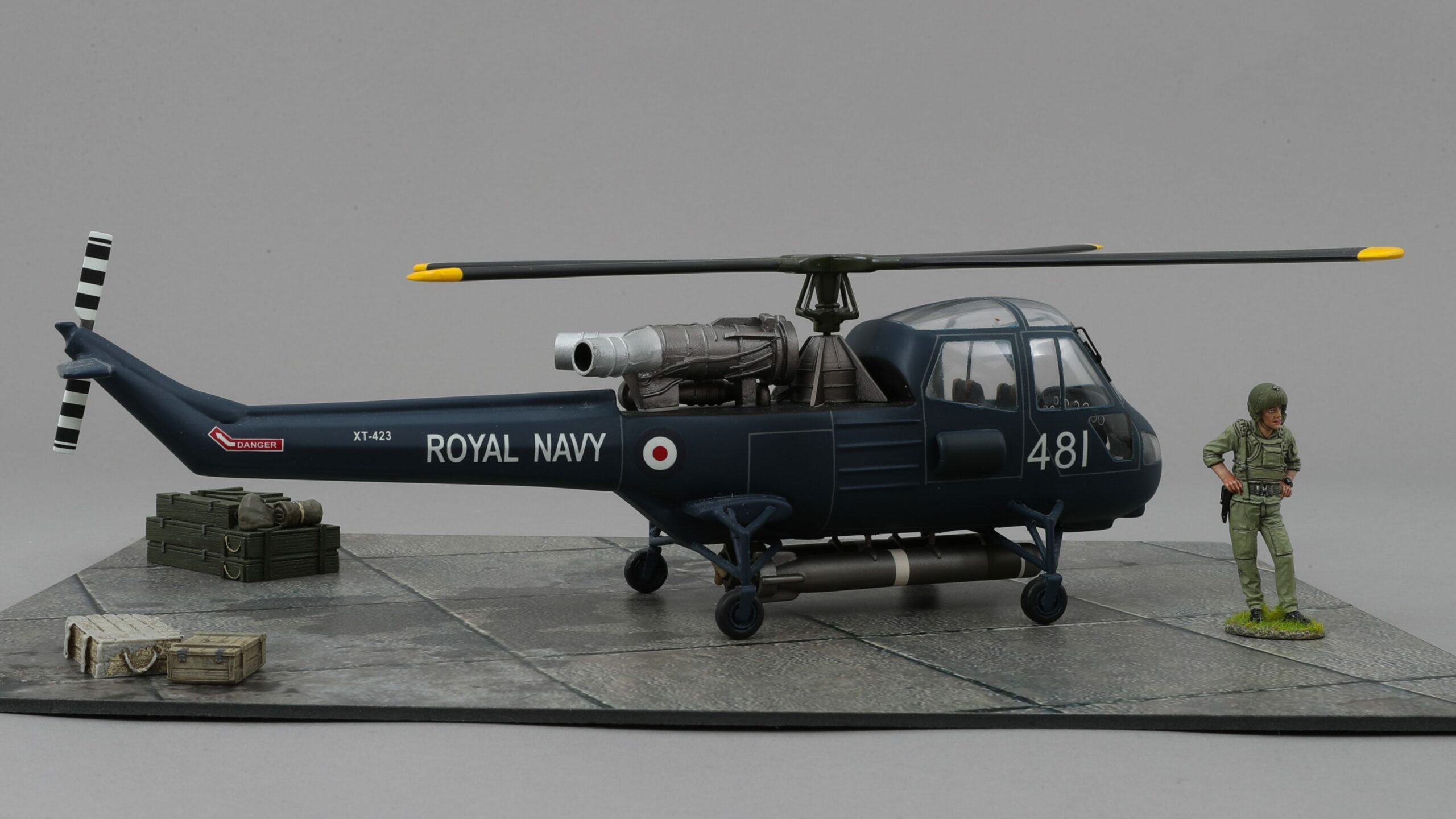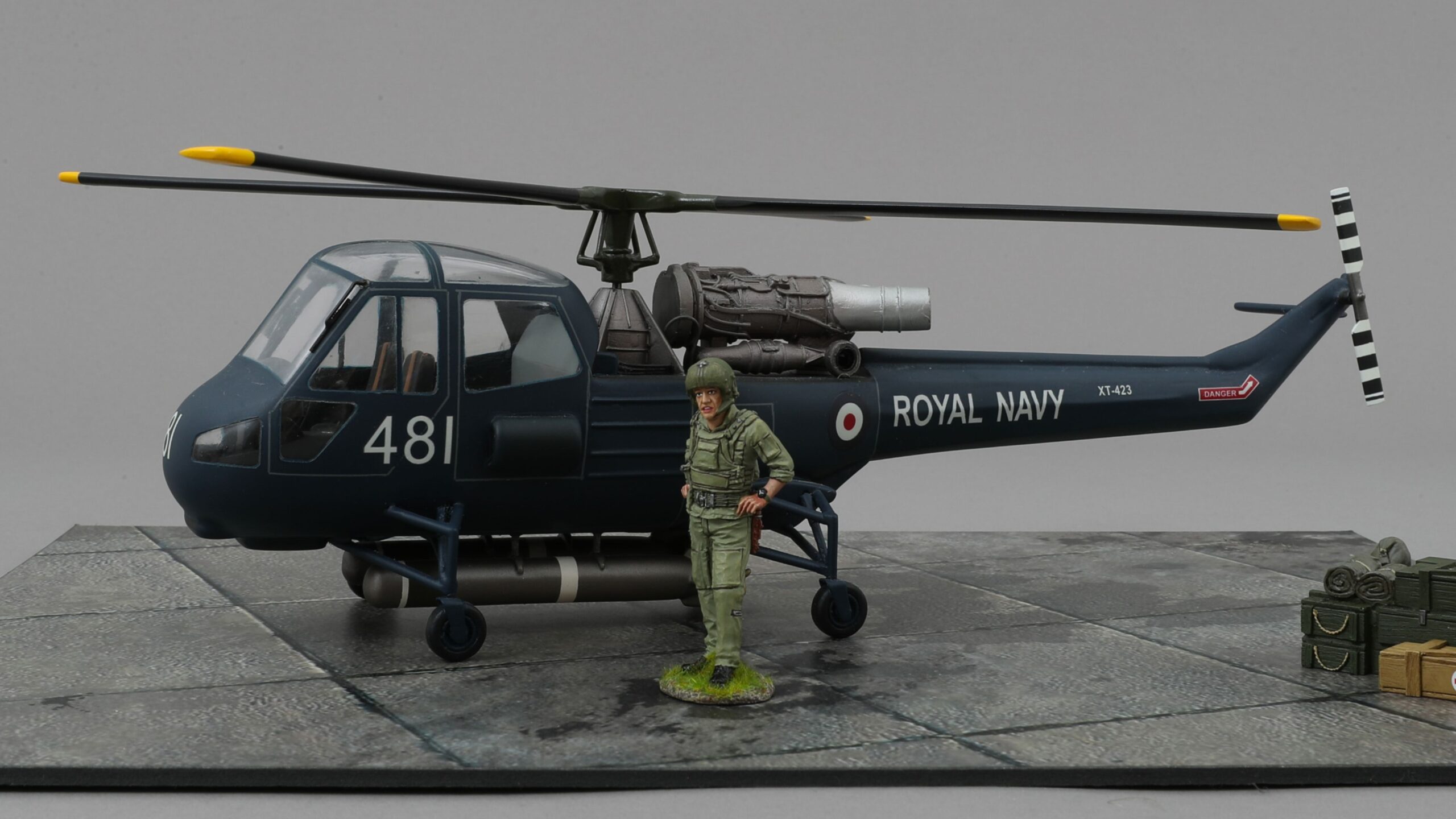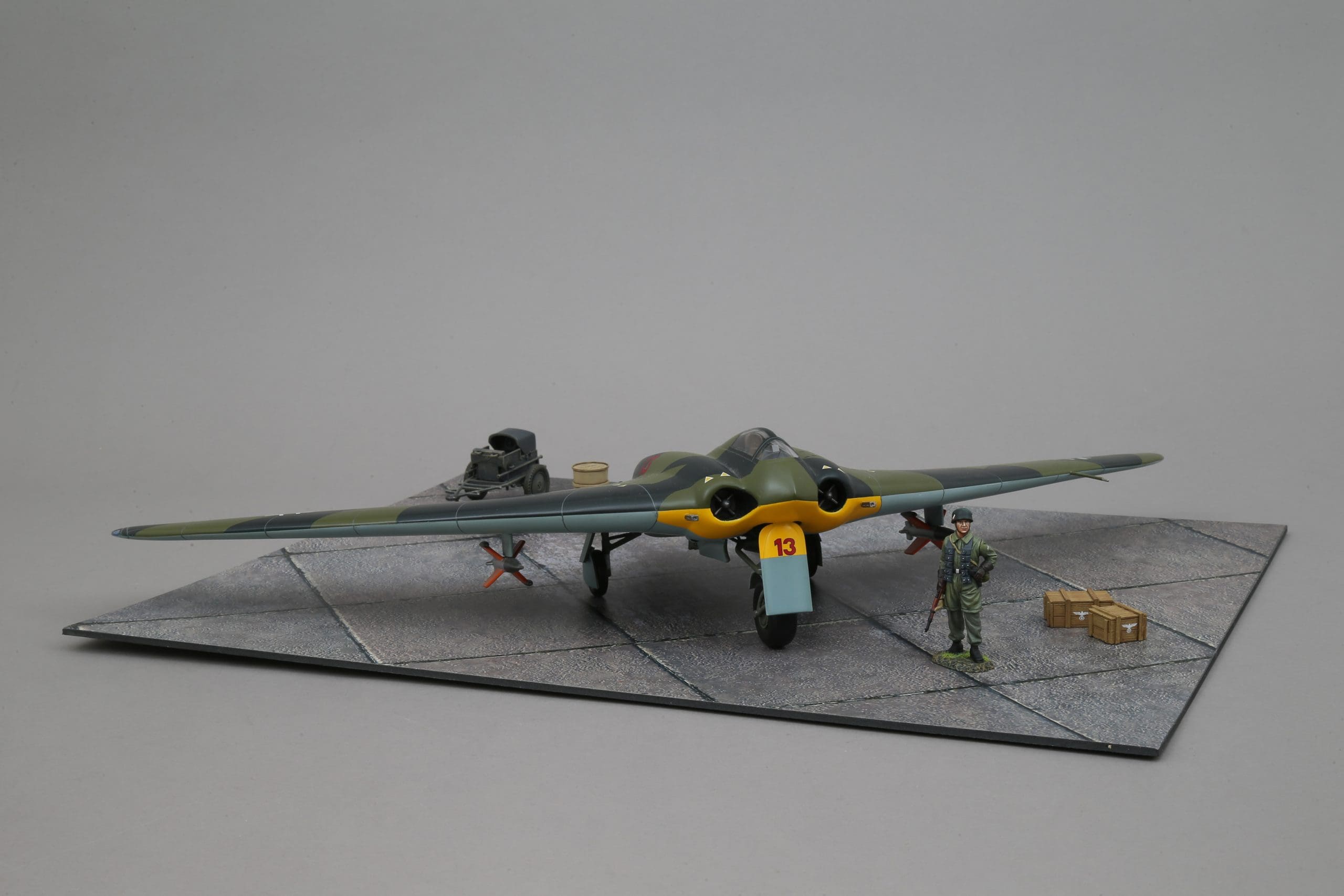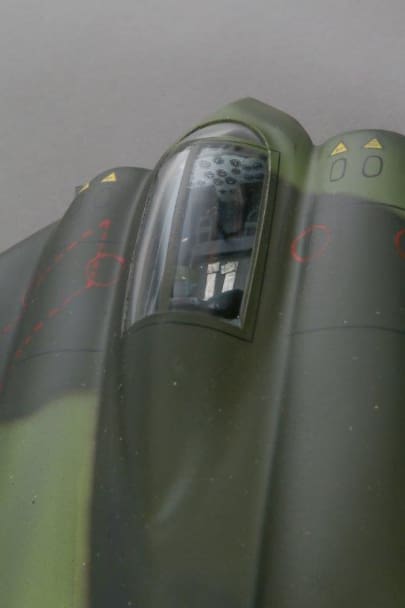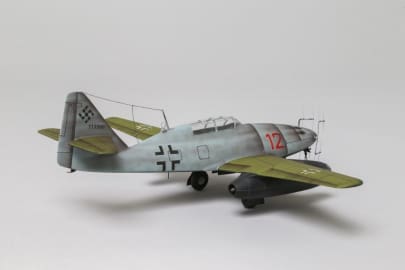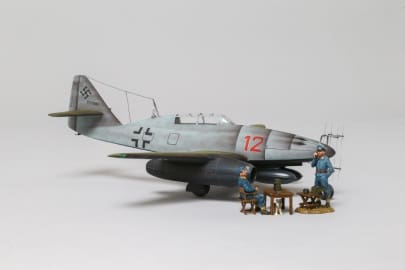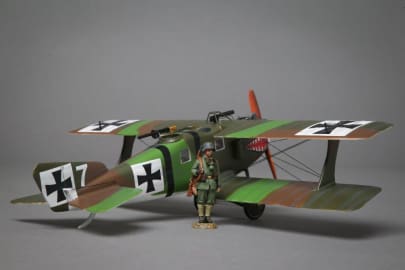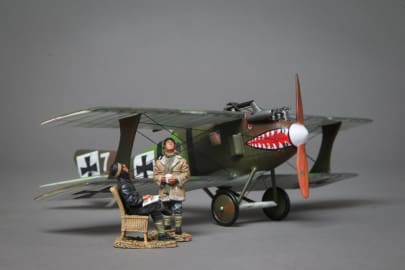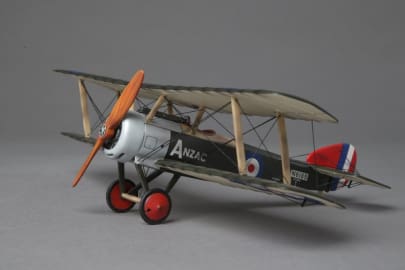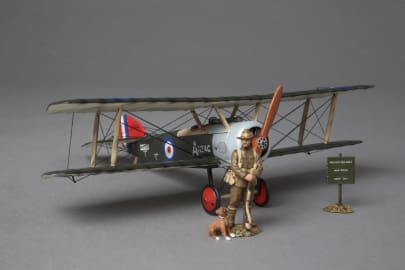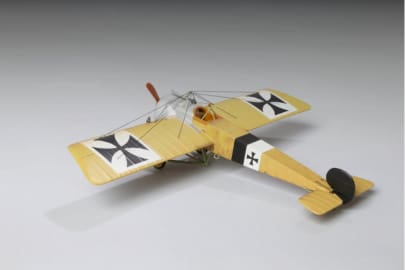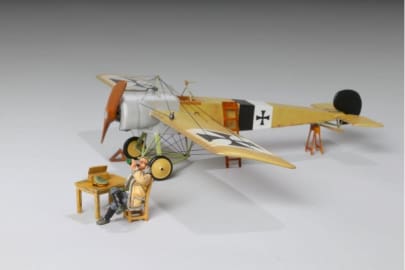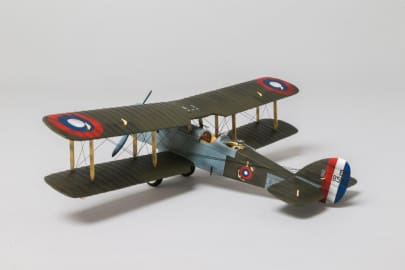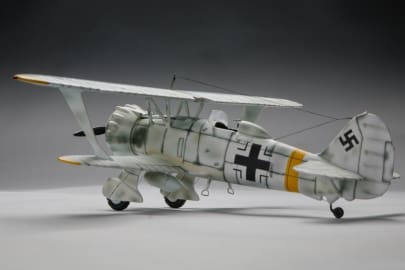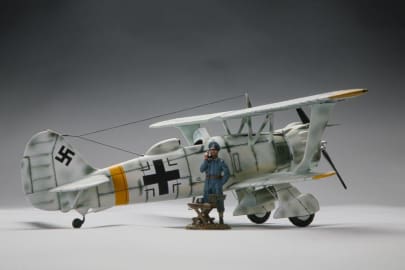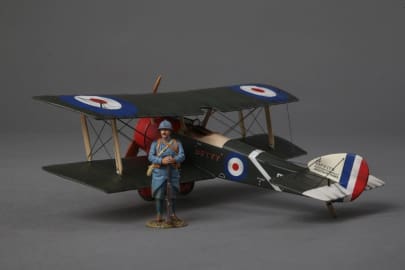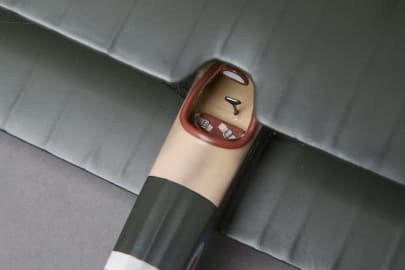- Free shipping available on orders over £100 (UK) £250 (EU) and $300 rest of the world
WOW642 Westland Wasp Royal Navy 1982 – Falklands
£799.00
Westland Wasp
WOW642 Royal Navy
WOW643 Royal Marines
The Westland Wasp is a British-designed, shipborne, anti-submarine helicopter that was developed in the 1960s. It was designed to be a light, capable anti-submarine warfare helicopter for use on small ships. The Wasp was used by the Royal Navy and other navies, including those of Brazil, South Africa, New Zealand, and the Netherlands.
The increasing speed and attack range of the submarine threat, and the increased range at which this threat could be detected, led to a British Royal Navy requirement for a “Manned Torpedo-Carrying Helicopter” (MATCH). Contemporary shipboard weapons did not have the necessary range, therefore MATCH was in essence a stand-off weapon with the helicopter carrying the torpedo or other weapon to the target and being instructed when and where to drop it. Unlike the larger Westland Wessex, the Wasp carried no sonar of its own, and was limited strictly to working in partnership with its parent ship, other ships or other anti-submarine warfare (ASW) units.
Wasp was essentially a navalised Scout, indeed it was originally to be called the Sea Scout, and differed mainly in design details. It had a unique 4-wheeled castering undercarriage that allowed the aircraft to be manoeuvred on small, pitching flightdecks. The Wasp could use “negative pitch” from the rotor-blades to enable the aircraft to “adhere” to the deck until the lashings were attached. Additional fuel tankage was installed in the cabin floor, and both the tail boom and main rotor blades were foldable to allow stowage in the small hangars fitted to the first generation helicopter-carrying escorts. It was fitted with a winch above the starboard rear door, and also had the capacity to carry underslung loads from the semi-automatic cargo release unit mounted under the fuselage. With a crew of two (Pilot and Missile Aimer/Aircrewman) and the capacity to seat three passengers, Wasp was useful for short-range transport missions, and for casualty evacuation with room for one stretcher fitted across the rear cabin area.
The Wasp HAS.1 was introduced to British Royal Navy service in the small ships role in 1964. It served in this primary role with 829 Naval Air Squadron, but also in training units to supply crews for the front line with 706 NAS between 1965 and 1967 and in 703 NAS between 1972 and 1981. Although effective as a submarine killer, it was best deployed paired with a Wessex HAS.3 submarine hunter. In the late 1970s, the Westland Lynx started to replace the Wasp.
On 25 April 1982, during the Falklands war, the Argentinian submarine ARA Santa Fe was spotted by a Wessex helicopter from HMS Antrim. The Wessex and a Lynx HAS.2 from HMS Brilliant then attacked it with depth charges, a Mk 46 torpedo, and also strafed it with General Purpose Machine Gun.
A Wasp launched from HMS Plymouth and two Wasps launched from HMS Endurance fired AS.12 anti-ship missiles at the submarine, scoring hits. Santa Fe was damaged badly enough to prevent her from submerging. The crew abandoned the submarine at the jetty on South Georgia and surrendered to the British forces, thus becoming the first casualty of the sea war, as well as the first direct engagement by the Royal Navy Task Force. Wasps flew 712 combat sorties during the Falklands War.
The last Wasp was withdrawn from service in 1988 when the last of the Type 12 Rothesay-class frigates was decommissioned.
Thomas Gunn are offer 2 x 1/30 scale versions of the Westland Wasp, both versions served in the Falkland’s in 1982.
WOW642 Wasp A.S.Mk-1 Royal Navy priced at $999 plus postage
WOW643 Wasp Royal Marines priced at $999 plus postage.
All the TG/K&C figures/accessories displayed in this newsletter are shown for scale comparison purposes only and are not included.
1 in stock
Description
Description
Westland Wasp
WOW642 Royal Navy
WOW643 Royal Marines
The Westland Wasp is a British-designed, shipborne, anti-submarine helicopter that was developed in the 1960s. It was designed to be a light, capable anti-submarine warfare helicopter for use on small ships. The Wasp was used by the Royal Navy and other navies, including those of Brazil, South Africa, New Zealand, and the Netherlands.
The increasing speed and attack range of the submarine threat, and the increased range at which this threat could be detected, led to a British Royal Navy requirement for a “Manned Torpedo-Carrying Helicopter” (MATCH). Contemporary shipboard weapons did not have the necessary range, therefore MATCH was in essence a stand-off weapon with the helicopter carrying the torpedo or other weapon to the target and being instructed when and where to drop it. Unlike the larger Westland Wessex, the Wasp carried no sonar of its own, and was limited strictly to working in partnership with its parent ship, other ships or other anti-submarine warfare (ASW) units.
Wasp was essentially a navalised Scout, indeed it was originally to be called the Sea Scout, and differed mainly in design details. It had a unique 4-wheeled castering undercarriage that allowed the aircraft to be manoeuvred on small, pitching flightdecks. The Wasp could use “negative pitch” from the rotor-blades to enable the aircraft to “adhere” to the deck until the lashings were attached. Additional fuel tankage was installed in the cabin floor, and both the tail boom and main rotor blades were foldable to allow stowage in the small hangars fitted to the first generation helicopter-carrying escorts. It was fitted with a winch above the starboard rear door, and also had the capacity to carry underslung loads from the semi-automatic cargo release unit mounted under the fuselage. With a crew of two (Pilot and Missile Aimer/Aircrewman) and the capacity to seat three passengers, Wasp was useful for short-range transport missions, and for casualty evacuation with room for one stretcher fitted across the rear cabin area.
The Wasp HAS.1 was introduced to British Royal Navy service in the small ships role in 1964. It served in this primary role with 829 Naval Air Squadron, but also in training units to supply crews for the front line with 706 NAS between 1965 and 1967 and in 703 NAS between 1972 and 1981. Although effective as a submarine killer, it was best deployed paired with a Wessex HAS.3 submarine hunter. In the late 1970s, the Westland Lynx started to replace the Wasp.
On 25 April 1982, during the Falklands war, the Argentinian submarine ARA Santa Fe was spotted by a Wessex helicopter from HMS Antrim. The Wessex and a Lynx HAS.2 from HMS Brilliant then attacked it with depth charges, a Mk 46 torpedo, and also strafed it with General Purpose Machine Gun.
A Wasp launched from HMS Plymouth and two Wasps launched from HMS Endurance fired AS.12 anti-ship missiles at the submarine, scoring hits. Santa Fe was damaged badly enough to prevent her from submerging. The crew abandoned the submarine at the jetty on South Georgia and surrendered to the British forces, thus becoming the first casualty of the sea war, as well as the first direct engagement by the Royal Navy Task Force. Wasps flew 712 combat sorties during teh Falklands War.
The last Wasp was withdrawn from service in 1988 when the last of the Type 12 Rothesay-class frigates was decommissioned.
Thomas Gunn are offer 2 x 1/30 scale versions of the Westland Wasp, both versions served in the Falkland’s in 1982.
WOW642 Wasp A.S.Mk-1 Royal Navy priced at $999 plus postage
WOW643 Wasp Royal Marines priced at $999 plus postage.
All the TG/K&C figures/accessories displayed in this newsletter are shown for scale comparison purposes only and are not included.

